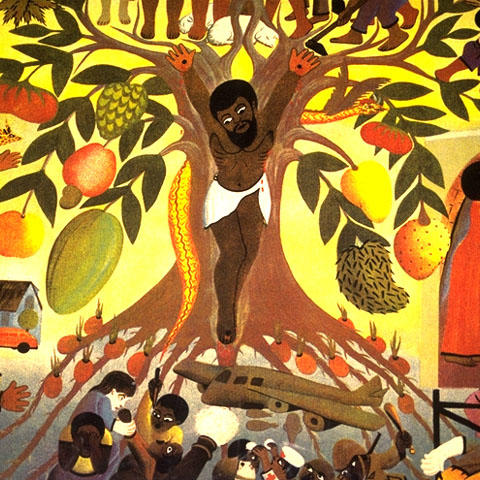 According to the Gospels, Jesus was executed by crucifixion at the hands of Roman authorities, and resurrected three days later. For Christians, this event affirms the divinity of Jesus and stands as a sign of God’s continuing presence and power in the world.
According to the Gospels, Jesus was executed by crucifixion at the hands of Roman authorities, and resurrected three days later. For Christians, this event affirms the divinity of Jesus and stands as a sign of God’s continuing presence and power in the world.
View full album
As Jesus traveled and preached, he angered the Roman rulers, who feared that he was provoking unrest among the people and planning a rebellion. He was also feared by some Jewish leaders because he challenged certain forms of authority and practice. Jesus named hypocrisy where he saw it and urged his community to claim a new prophetic vision. Those who opposed him saw him as a dangerous upstart who wanted to form a cult around himself. Jesus was well aware of these charges against him by political and religious authorities, and he predicted that he would be attacked and persecuted.
After a teaching ministry of around three years, Jesus went to Jerusalem to observe the Jewish holiday of Passover. There, he warned those closest to him of his coming death and gathered them together for a meal that would be their last supper together. Judas, one of Jesus’ disciples, then betrayed Jesus to the Roman authorities and he was arrested. The Jewish high priest denounced the captive Jesus as a blasphemer who claimed to be the Messiah. He was taken before the Roman authorities, where Pontius Pilate ultimately charged Jesus with sedition and executed him via the Roman practice of crucifixion, being nailed to a cross. Jesus died on Friday just before the Sabbath so his body was quickly taken away and laid in a stone tomb.
Early that Sunday morning, according to all Gospel accounts, some of the women who had followed Jesus went to his tomb to prepare his body for a proper burial. When they arrived, they discovered that the stone at the entrance to the tomb had been rolled away and the tomb was empty. According to the synoptic Gospels, a figure in dazzling white appeared and told the women that Jesus had been raised from the dead. In John’s account, a man who seemed to be the gardener appeared to Mary Magdalene and spoke to her by name; it was Jesus. Although their accounts differ, the Gospels report that in the following days, many of the disciples saw Jesus and experienced his presence. After remaining with his followers for some time, Jesus is described in some texts as ascending up to heaven. Going forward, his followers’ experience of the living Christ stood at the heart of the Christian faith.
Those who have followed the path of Christ through the centuries have understood his life, death, and resurrection as a profound affirmation of God’s presence and power in the midst of humanity. The “Christ event,” according to many Christians, cannot be understood in the context of the 1st century alone; it is as much a 21st century event, repeated and renewed daily in the lives of those who take this as the story of their own faith.